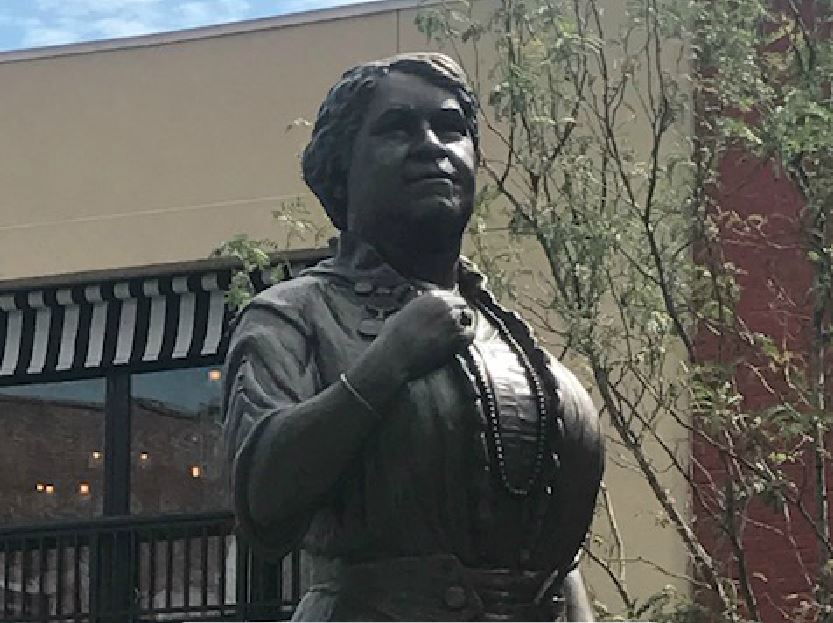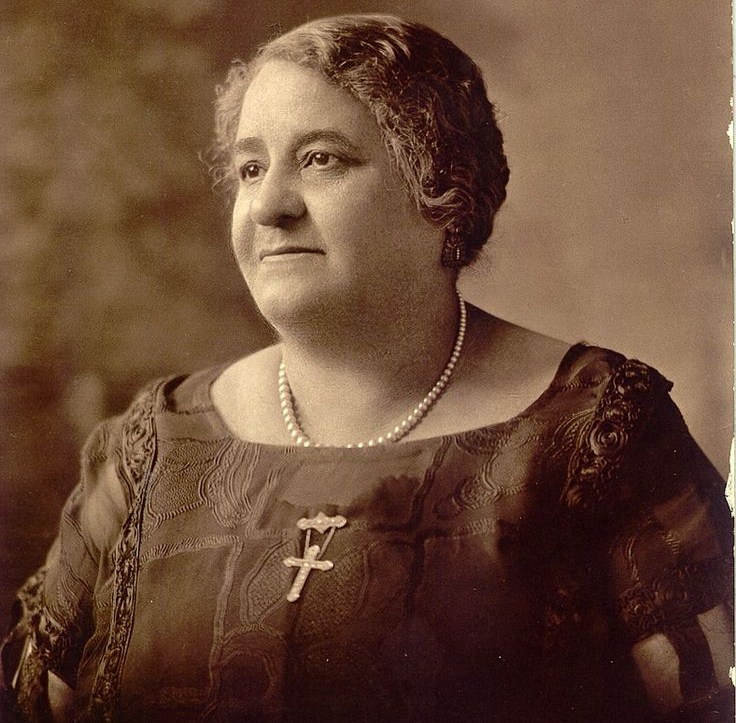Statue of first African American woman bank founder in America unveiled in Richmond

BY PAT D. JONES, SPECIAL ENVOY
The name Maggie L. Walker was not known to many, especially within the younger population, though its bearer holds a special place in world history, being the first African American woman to found a bank in the United States. Not anymore, with the unveiling, this past weekend, of a statue honoring her memory.
She had humble beginnings in post-Civil War America, in the very city that served as the capital of the confederacy, the rebellious American south that fought tooth and nail to preserve the horrible institution of slavery: Richmond. But Maggie Lena Walker rose to wealth and prominence and became a community leader who left indelible marks on history, primarily by improving the way of life for Americans in general, and women in particular. The majestic statue now standing proudly at the intersection of Broad and Adams streets, in downtown Richmond, where many of her achievements occurred, does justice to a household name of her time.
 As a teenager, Maggie Mitchell (who later in life became Maggie Walker after getting married to Armstead Walker Jr.), joined the local chapter of the Independent Order of St. Luke, a fraternal burial society founded in 1867 in Baltimore, Maryland dedicated to promoting humanitarian causes for the sick and the elderly. She climbed the latter of the organization, from as low as delegate to the biannual convention to the top position of Right Worthy Grand Secretary in 1899, which she held until her demise in 1934. The then-dying organization came back to life thanks to her unparalleled managerial and public relations skills. Better yet, in 1902, she launched a publication, The St. Luke Herald, that helped communicate between the order and the public. But the best was yet to come. In 1903, Maggie L. Walker established the St. Luke Penny Savings Bank, the first such financial institution created by an African American woman in the United States. She assumed the position of the bank’s first president, until it later merged with two other Richmond banks to become The Consolidated Bank and Trust Company, at which time she served as chairman of the board.
As a teenager, Maggie Mitchell (who later in life became Maggie Walker after getting married to Armstead Walker Jr.), joined the local chapter of the Independent Order of St. Luke, a fraternal burial society founded in 1867 in Baltimore, Maryland dedicated to promoting humanitarian causes for the sick and the elderly. She climbed the latter of the organization, from as low as delegate to the biannual convention to the top position of Right Worthy Grand Secretary in 1899, which she held until her demise in 1934. The then-dying organization came back to life thanks to her unparalleled managerial and public relations skills. Better yet, in 1902, she launched a publication, The St. Luke Herald, that helped communicate between the order and the public. But the best was yet to come. In 1903, Maggie L. Walker established the St. Luke Penny Savings Bank, the first such financial institution created by an African American woman in the United States. She assumed the position of the bank’s first president, until it later merged with two other Richmond banks to become The Consolidated Bank and Trust Company, at which time she served as chairman of the board.
Maggie Walker was born right here in Richmond, Virginia on July 15, 1864. Her mother, Elizabeth Draper, was a former slave and assistant cook in the Church Hill mansion of Elizabeth Van Lew, a Civil War spy. This background probably accounts for Maggie Walker’s interest, later in life, in civil rights matters, prompting her to hold several leadership positions in major U.S. civil rights organizations.
She served on the board of trustees of several women’s orgnaizations, including the National Association of Colored Women (NACW) and the Virginia Industrial School for Girls. She also assumed locally the position of vice president of the National Association for the Advancement of Colored People (NAACP), and was a member of the national NAACP board. That is not to mention her serving as a member of the Virginia Interracial Commission.
She attended Richmond’s public schools, and later taught grade school for three years. She retired from teaching in 1886 when she married Armstead Walker, Jr., and directed her energies toward caring for her family and strengthening the Independent Order of St. Luke.


